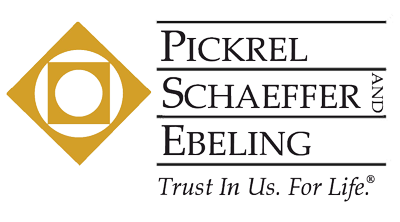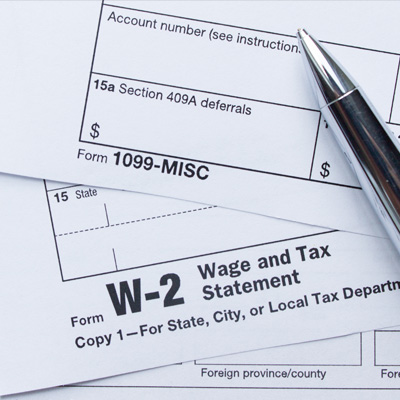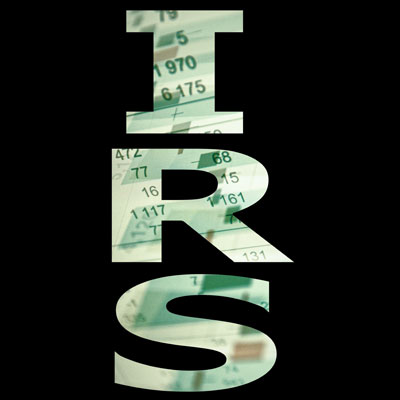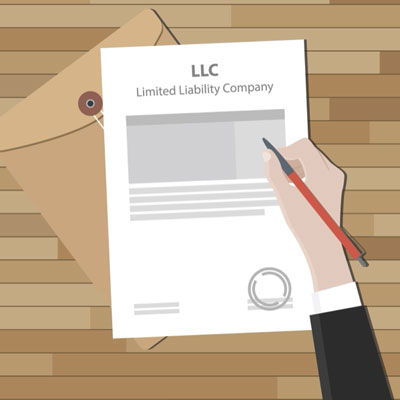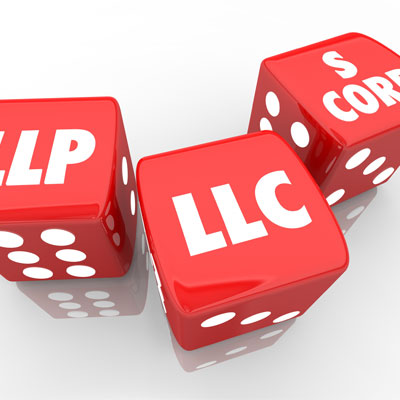
On March 27, 2020, Congress approved the Coronavirus Aid, Relief, and Economic Security (CARES) Act, a two-trillion-dollar aid package to help individuals and businesses who are experiencing the effects of the coronavirus pandemic and to stimulate the economy. Numerous programs are available and while the following list may not be exhaustive, here are just a few of the employment and small-business- related provisions, as well as a summary of benefits available to individuals, under the new law:
SUMMARY OF EMPLOYMENT AND SMALL BUSINESS-RELATED PROVISIONS
Employee retention credits. The CARES Act provides eligible employers with a refundable payroll tax credit equal to 50% of certain “qualified wages” (including certain health plan expenses) paid to its employees in a calendar quarter if the employer is engaged in an active trade or business in 2020 and if, during the calendar quarter, one of the following conditions applied:
(i) the operation of that trade or business is fully or partially suspended due to a governmental order related to COVID-19; or
(ii) the gross receipts for that trade or business are less than 50% of gross receipts for the same calendar quarter of the prior year.
For employers with more than 100 employees, wages eligible for the credit are wages that the employer pays employees who are not providing services due to the suspension of the business or a drop in gross receipts. For employers with 100 or fewer employees, all wages paid qualify for the credit.
The credit is capped at $5,000 (50% of $10,000 qualified wages) per employee for all calendar quarters. Section 501(c) tax-exempt organizations are eligible for the credit, but governmental entities and companies receiving small business interruption loans under the CARES Act are not.
Paycheck protection program. This program gives the Small Business Administration (SBA) the ability to guarantee $350 billion in loans to small businesses via a network of more than 800 banks. The Paycheck program provides eight weeks of cash-flow assistance to small businesses with fewer than 500 employees. No collateral or personal guarantees will be required by the lender. The portion of these loans that employers use for payroll costs, interest on mortgage payments, rent and utilities may qualify for forgiveness, provided that small businesses receiving these loans maintain their payrolls until June of 2020.
The interest rate on the loans cannot be greater than 4%. The CARES Act increases the SBA guaranty of such loans to 100% until the end of 2020.
In order to approve these loans, lenders are only required to determine whether a business (1) was operational on February 15, 2020, and (2) had employees for whom it paid salaries and payroll taxes, or a paid independent contractor. Borrowers are required to make certifications regarding the impact of COVID-19 on their business and intentions regarding use of the loan.
The U.S. Treasury has the authority to approve new lenders who do not currently make 7(a) SBA loans to make Paycheck Protection Loans. Businesses interested in Paycheck Protection Loans should contact their financial institution. Further guidance is expected within the coming days regarding lenders who have been added to the list of lenders already approved to make these loans.
SBA Economic Injury Disaster Loans (EIDL). The CARES Act creates a new emergency grant of $10,000 for small businesses that apply for an SBA economic injury disaster loan (EIDL). EIDLs are loans up to $2 million with interest rates of 3.75% for businesses and 2.75% for nonprofits, and principal and interest payments deferred up to 4 years. The EIDL loans may be used to pay for expenses that could have been met had the disaster not happened, including payroll and other operating expenses. The EIDL grant does not need to be repaid even if the applicant is denied an EIDL. A small business may apply for an EIDL grant and a Paycheck Protection loan. The EIDL grant will be subtracted from the amount of the Paycheck Protection loan that is forgivable. For businesses with existing SBA loans, (such as a 7(a), 504, or microloan) or take one out within 6 months after the CARES Act is enacted, the SBA will pay all loan costs for borrowers, including principal, interest, and fees, for six-months. SBA borrowers may also seek an extension of the duration of their loan and delay certain reporting requirements. More information on this program is available here: https://covid19relief.sba.gov/#/
Immediate payroll tax credits and advance refunds for employee sick leave and FMLA leave. The law provides for advance refunding of the payroll tax credits enacted last week in the Families First Coronavirus Response Act (FFCRA). The credits for required paid sick leave paid family leave under the recently expanded employee paid leave provisions may be refunded in advance using forms and instructions the IRS will provide. The IRS is instructed to waive any penalties for failure to deposit payroll taxes under Sec. 3111(a) or 3221(a) if the failure was due to an anticipated payroll tax credit.
Any tax credit advances are capped at the same amount as provided in the Families First Coronavirus Response Act (FFCRA), which provided for expanded emergency FMLA leave and emergency paid sick leave, with respect to tax credits, as originally enacted.
For paid emergency FMLA leave, the amount of the credit is equal to 100 percent of the “qualified family leave wages” that the employer is required to pay for the applicable quarter. This dollar-for-dollar credit is capped at $200 per employee per day, up to a maximum aggregate amount for all calendar quarters of $10,000 per employee.
For paid emergency sick leave, the amount of tax credit is capped at $511 per employee per day if the employee takes leave for reasons of quarantine, self-quarantine, or symptoms/diagnosis and at $200 per employee per day if the employee takes leave to care for a quarantined individual, for qualifying child care reasons, or to care for an employee’s own substantially similar condition. FFCRA also provides tax credits for self-employed individuals who would be entitled to receive emergency paid sick leave if they had been employed by a third-party employer.
The CARES Act also modified the FFCRA to provide that employees who were “laid off” by an employer on or after March 1, 2020, may potentially qualify for emergency paid FMLA leave if they are later rehired by the same employer. Layoff, however, is an undefined term.
To be eligible for this exception, a re-hired employee must have worked for the employer for at least 30 of the last 60 calendar days prior to layoff.
Payroll tax delay. 50% of 2020 employer payroll taxes until Dec. 31, 2021 will be delayed, and the other 50% will be due Dec. 31, 2022. 50% of self-employment taxes will not be due until those same dates.
Delay on single employer pension plan contributions. Single employer pension plans are allowed to delay quarterly contributions for 2020 until the end of the year. Employers may also use 2019 funded status for the purposes of determining funding-based limits on plan benefits for the plan years that include 2020.
Click here for the Complete Guide for Small Businesses.
SUMMARY OF BENEFITS AVAILABLE TO INDIVIDUALS
Pandemic unemployment assistance. Temporary pandemic Unemployment Compensation assistance will be available through December 31, 2020. The law expands the number of weeks of Unemployment Compensation available from 26 to 39 weeks. The provisions expand the availability of Unemployment Compensation to self-employed individuals, independent contractors, part-time workers (who are not covered by all states in normal circumstances) and others who are unable to work for reasons related to COVID-19. Such reasons include the following:
• being diagnosed with COVID-19;
• experiencing symptoms of COVID-19 and seeking a COVID-19 diagnosis or testing;
• a member of the individual’s household has been diagnosed with COVID–19;
• caring for a family member or household member who has been diagnosed with COVID-19;
• caring for a child or other household member whose facility has been shut down due to the coronavirus pandemic;
• being unable to reach the place of work due to quarantine imposed as a direct result of the COVID-19 public health emergency;
• being unable to reach the place of employment because a health care provider has advised self-quarantine due to concerns related to COVID–19;
• being scheduled to commence employment and does not have a job or is unable to reach the job as a direct result of the COVID-19 public health emergency;
• becoming the breadwinner or major support for a household because the head of the household died as a direct result of COVID-19;
• quitting a job as a direct result of COVID-19; and
• closure of place of business as a direct result of COVID-19.
In additional to the normal state unemployment benefits which vary from state by state, the CARES Act would provide an additional $600 per week benefit for up to four months, the intent of which is provide benefits that are closer to 100% of an individual’s normal income.
Recovery rebates for individuals and families. The law provides for payments to taxpayers which will be treated as an advance on refunds of a 2020 tax year credit. Individuals will receive a tax credit of $1,200 ($2,400 for joint filers) plus $500 for each qualifying child. The credit will not be available to taxpayers with adjusted gross income (AGI) above $150,000 (for joint filers), $112,500 (for heads of household), and $75,000 for other individuals. The credit is not available to nonresident aliens, individuals who can be claimed as a dependent by another taxpayer, and estates and trusts. Taxpayers will reduce the amount of the credit on their 2020 tax return by the amount of the advance refund payment they receive.
No action on their part will be required to receive a rebate check, since the IRS will use a taxpayer’s 2019 tax return if filed or their 2018 return if they haven’t filed their 2019 return. This includes many individuals with very low income who file a tax return despite not owing any tax in order to take advantage of the refundable Earned Income Tax Credit and Child Tax Credit. The IRS will use a direct deposit method of providing the payment if that has been used in the past. Individuals can also register for direct deposit at https://www.irs.gov/refunds/get-your-refund-faster-tell-irs-to-direct-deposit-your-refund-to-one-two-or-three-accounts
The best way for individuals and families to ensure they receive a recovery rebate is to file a 2019 tax return if they have not already done so. The law also instructs the IRS to engage in a public campaign to alert all individuals of their eligibility for the rebate and how to receive it if they have not filed either a 2019 or 2018 tax return.
If individuals have a past due debt to a federal or state agency, or owe back taxes, the rebate will nevertheless not be reduced. The law turns off nearly all administrative offsets that ordinarily may reduce tax refunds for individuals who have past tax debts, or who are behind on other payments to federal or state governments, including student loan payments. The only administrative offset that will be enforced applies to those who have past due child support payments that the states have reported to the Treasury Department.
The recovery rebated are expected to go out to individuals and families within the next 2-3 weeks.
Retirement plan distributions. Up to $100,000 in coronavirus-related distributions from retirement plans will not be subject to the 10% additional tax for early distributions. Coronavirus-related distributions can be taken up to Dec. 31, 2020. Taxpayers will be eligible to take the distribution if they have been diagnosed with SARS-CoV-2 virus or COVID-19 disease, a spouse or dependent has been diagnosed with SARS-CoV-2 virus or COVID-19 disease, they have experienced adverse financial consequences from being quarantined, furloughed, or laid off, have had his or her work hours reduced, or who is unable to work due to lack of child care. The law also allows loans of up to $100,000 from qualified plans, with delayed repayment provisions.
In order to begin the process of applying for a coronavirus-related distribution from a retirement plan, individuals should contact the plan or plan administrator for their individual retirement account.
If you have questions regarding any of the above provisions of the CARES Act, or need further assistance with employment law or COVID-19- related matters, the attorneys at Pickrel, Schaeffer and Ebeling are here to assist you. Please contact Kristina Curry, Matt Stokely or another PS&E attorney at (937) 223-1130 or via our website at www.pselaw.com.
